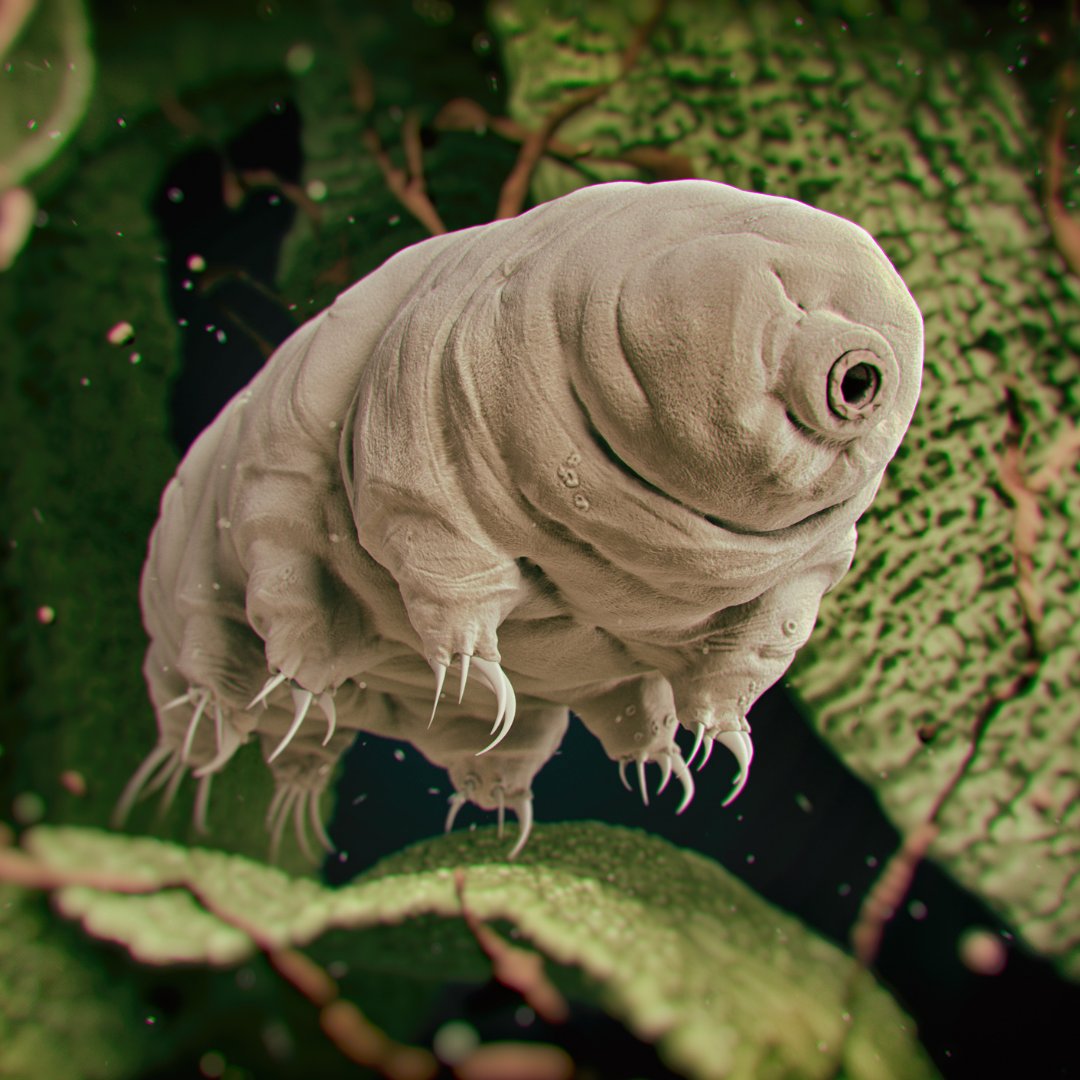
Why would one of the world's smallest, softest creatures have legs? 🤔
Meet the Tardigrade.
Also known as water bears or moss piglets, these segmented micro-animals are just 0.5 mm long when fully grown.
THREAD ⬇️
Meet the Tardigrade.
Also known as water bears or moss piglets, these segmented micro-animals are just 0.5 mm long when fully grown.
THREAD ⬇️

Some species of Tardigrade are able to survive for up to 30 years without food or water and endure temperature extremes of up to 150 degrees Celsius.
This makes them one of the toughest species on the planet. 💪
This makes them one of the toughest species on the planet. 💪
A Tardigrade has eight stubby legs which it uses to propel itself through marine and freshwater sediment, across desert dunes, and beneath the soil.
However, creatures with similarly small, soft bodies rarely have legs - so why do Tardigrades? 🤔
However, creatures with similarly small, soft bodies rarely have legs - so why do Tardigrades? 🤔
There are about 1,300 known species in the phylum Tardigrada, with the earliest known specimens having been found in amber from 145 to 66 million years ago.
However, it's also likely that they have a significantly earlier origin, maybe from over 500 million years ago.
However, it's also likely that they have a significantly earlier origin, maybe from over 500 million years ago.
Joint research between Oxford, @RockefellerUniv, and @Princeton, found that their coordination mirrors the stepping patterns of larger panarthropods such as stick insects and spiders.
Can there be a ‘universal’ locomotive strategy in a set of animals?
Can there be a ‘universal’ locomotive strategy in a set of animals?
Just like insects, Tardigrades run at increasing speeds without ever changing their basic stepping patterns.
They also respond to changes in substrate stiffness - as the ground under their feet gets softer and gives way, they switch to a ‘bounding’ coordination pattern.
They also respond to changes in substrate stiffness - as the ground under their feet gets softer and gives way, they switch to a ‘bounding’ coordination pattern.

This walking pattern has also been observed in desert beetles.
This discovery implies the existence of either a common ancestor or an evolutionary advantage that explains why one of the smallest, softest creatures evolved to walk just like larger, hard-bodied panarthropods.
This discovery implies the existence of either a common ancestor or an evolutionary advantage that explains why one of the smallest, softest creatures evolved to walk just like larger, hard-bodied panarthropods.
Click below to find out more ⬇️
ox.ac.uk/news/features/…
ox.ac.uk/news/features/…
• • •
Missing some Tweet in this thread? You can try to
force a refresh





